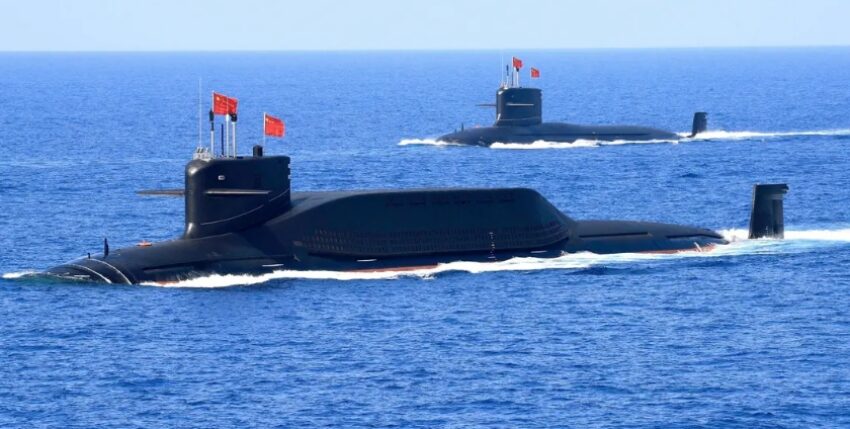China is continuously expanding its influence on other countries. Its opponents are the USA - and Europe.
China's global, economic and military rise as a geopolitical and geostrategic counter-power to the USA continues unabated. China, a global power with 1.4 billion people, is in the process of further changing the global power constellation beyond the Western Pacific and Southeast Asia. China's head of state and commander-in-chief of the armed forces, Xi Jinping, is single-mindedly pushing "China's dream of returning to its former strength". China is now the world's largest trading power, owns the world's largest container fleet and has been the world's second-largest economy since 2012. According to all forecasts, China will by 2032, replacing the USA (350 million people) as the largest economic power. Over 90 per cent of China's foreign trade is conducted by sea. In the meantime, China maintains the largest armed forces in the world and has in particular brought its navy, i.e. the PLAN (People's Liberation Army Navy), to a "world-class level" and expanded its numbers to become the largest navy in the world with the ability to conduct global operations. Currently, the PLAN operates with 398 ships on active duty, while the U.S. Navy can only muster 297 ships on active duty. Xi Jinping has called for China to grow into a naval power in order to break the supremacy of the USA in the Pacific-Asia region and, among other things, "to be able to wage and win a possible war".
Sea militia
In addition to the PLAN, China maintains a second paramilitary fleet with over 200 units (fishery protection vessels, fishing boats, coast guard vessels, survey and research vessels, SAR vessels) under the control of various state authorities. The diverse ship types displace between approx. 160 tonnes and approx. 4,000 tonnes and are mostly armed with 57 mm and 14.5 mm guns and on-board helicopters. Their tasks include reconnaissance missions, logistical support for the navy (PLAN), securing fishing grounds and, above all, enforcing China's territorial claims in the South China Sea. This maritime militia acts offensively and aggressively as part of a "sea control/denial" strategy.
China's power projection
"Strategic Management at Sea" forms the core of China's maritime strategy, namely securing China's maritime interests, protecting trade routes at sea, strategic control of the South China Sea, defence of maritime borders, protection of the homeland against threats from the sea, securing access to global resources, securing China's investments abroad (Silk Road), exploiting maritime resources and expanding the maritime economy/industry. In achieving these strategic goals, it is important to win the initiative, because "history and experience tell us that a country will rise if it dominates the seas and will fall if it abandons them," Xi Jinping explained, citing the American maritime power theorist Alfred Thayer Mahan.
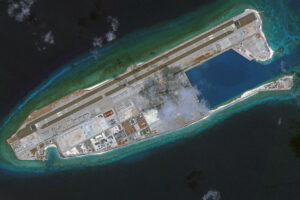
China considers 80 per cent of the South China Sea to be "mare nostrum" and is single-mindedly developing the island groups and offshore reefs there into military bases, thereby securing the resources (oil, gas ores and fishing) in the exclusive economic zones. Protests by the neighbouring states with their justified claims to the islands/reefs and the judgements of international courts are ignored. Instead, China insists on ancient rights and demands the return of what has been lost over the centuries. The USA, on the other hand, insists on the international right of freedom of navigation under the UN Convention on the Law of the Sea, to which the USA, unlike China, has not even acceded, and its naval and naval air forces regularly sail through and fly over the "territorial waters/airspace" claimed by China in the South China Sea. This repeatedly leads to dangerous incidents when China's naval forces and air force pursue, push away or intercept the US units. The Stockholm International Peace Research Institute (SIPRI) therefore ranks the South China Sea as one of the regions of the world with the highest risk of escalation.
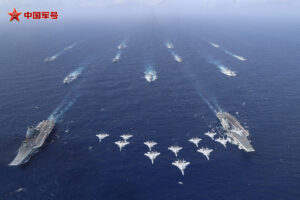
China is in dispute with Japan over the Senkaku Islands in the East China Sea. Chinese patrol boats and fighter planes have repeatedly entered the waters and airspace there. They have always been stopped by Japanese naval forces. Nevertheless, China has established an air defence zone over the islands in order to control and monitor the sea areas. Taiwan is another dangerous centre of escalation. For Xi Jinping, Taiwan as part of China is a central question of legitimacy and reunification with China is inevitable. For this reason, Taiwan is to be united with China by force of arms. However, the 23 million Taiwanese see themselves predominantly as independent and are arming themselves with massive American defence support in order to be able to fend off possible attacks by China. The USA has also promised to defend Taiwan against a Chinese attack. China has been rehearsing the encirclement of Taiwan for years with large-scale military manoeuvres. As recently as October 2024, China rehearsed the encirclement and blockade of Taiwan with the large-scale manoeuvre "Joint Sword 2024-B". China is also attempting to block the 180-kilometre-wide Taiwan Strait as a Chinese Exclusive Economic Zone (EEZ) and regularly protests when Western naval units pass through the area. For example, China protested when the frigate "Baden-Württemberg" with the supply ship "Frankfurt am Main" passed through the Taiwan Strait in September 2024 as part of the "Indic-Pacific Deployment 2024".
China's global maritime strategy
The core of China's global maritime strategy is international trade, as maritime power is a prerequisite for world trade. With its "Maritime Silk Road" infrastructure project, China is unfolding its power projection as economic penetration and domination of the seas worldwide. 125 countries are already integrated into the Silk Road. China has moved closer to the sales markets for its industrial goods with its infrastructure investments, particularly in Africa, South America and Europe. China is also present in the Arctic with the "Silk Road in the Ice". Most African countries have long been economically dominated by China and made dependent by excessive debt. China has declared South America to be an indispensable partner and has concluded long-term economic agreements and harbour usage rights, as was recently the case in Peru. It is no longer the USA but China that is the largest trading partner there. Europe in particular is subject to China's global strategy with the Silk Road. China has already concluded infrastructure agreements with 13 EU countries. China is investing in the expansion of strategically important infrastructure and in ports in particular. China's global port strategy, i.e. the construction of geostrategic bridgeheads along the maritime Silk Road, extends from the Yellow Sea via Africa, the Central and Black Seas via South America to Europe. These already include harbours in Egypt, Pakistan, Turkey, Greece (Piraeus) and Italy (Genoa, Trieste), Malta, the Croatian Adriatic port of Rijeka, Rotterdam and Hamburg as well as airport shares in London. Whoever owns the harbours also determines the trade routes. 60 neighbouring countries with 63 percent of the world's population, which generate up to 40 percent of the world's GDP, live along the Silk Road. With the Silk Road project, the country is pursuing classic geopolitical sea power and great power politics.
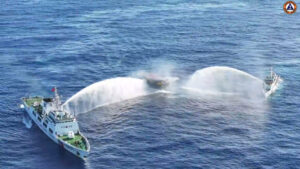
Supply ship, photo: Philippine Coast Guard
With the establishment of a naval base in Djibouti on the Horn of Africa, China has marked its claim as a maritime power beyond the Asia-Pacific region. China has concluded a security agreement with the Salomon Islands with rights of use for China's fleet. China is currently negotiating with Papua New Guinea to expand its influence in the Pacific. China wants to reduce the island state's debt in return for being able to build a naval base there with access to the Pacific deep sea for its nuclear submarines. China has a naval base in Cambodia, a harbour in Sri Lanka and a free trade agreement and port usage rights with the Maldives.
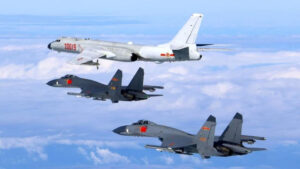
China's Masterplan 2025 aims to become a world leader in ten key technologies. These key technologies include artificial intelligence, quantum computing, big data, robotics, aerospace, shipbuilding, defence technology, energy generation and alternative drive systems. China combines this with the acquisition of European high-tech companies. In the age of globalisation, digitalisation, cyber and artificial intelligence and the conquest of space, these are all shortcuts on the way to becoming a world power.
Control of the opposite coast
Like every maritime power, the USA is dependent on geopolitical and geostrategic control of the opposite coasts to maintain its power. The USA's opposite coasts are Europe and Asia. With NATO, the USA has secured the opposite coast of Europe. Since 1941, the USA has controlled the Asian opposite coast in the West Pacific as the undisputed power of order. However, America's role as a world power in the Far East is challenging China. Like any leading power, the USA is trying to keep its challenger under control. In its "National Defence Strategy 2018", the USA has already declared China to be the dominant security policy opponent alongside Russia, which must be contained by all means. One means is the "trade war" against China and other countries, which US President Trump once launched under the motto "America First". Among other things, he has cancelled the Pacific Free Trade Agreement (Trans-Pacific Partnership/TPP), to which eleven Pacific Rim countries belong. In doing so, however, the USA has created a vacuum that China has immediately filled with its Silk Road initiative, among other things - following the advice of the military strategist Sunzi (ca. 500 AD): "Avoid the main power, penetrate the open spaces." China decides quickly and thinks globally.
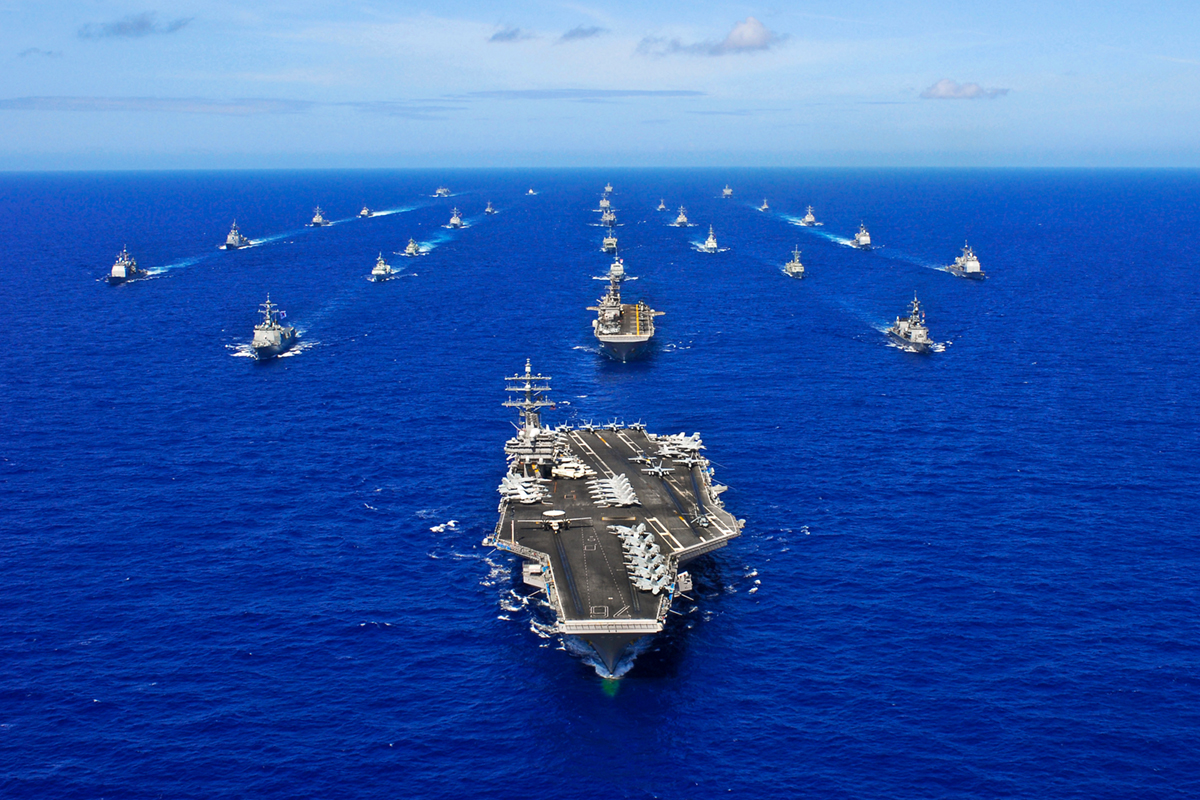
In order to stop China's rise, the USA and countries in the Indo-Pacific region have agreed on a variety of security policy co-operations against China. The USA, Australia, Japan, the Philippines, New Zealand and South Korea are linked by defence agreements against China. The USA, Japan, Australia and India have joined forces in the Quadrilateral Security Dialogue (Quad) because of China's intrusion into the Indian Ocean. Quad is specifically directed against China's expansionist policy and ensures security and stability in the Indian Ocean in particular with the large-scale manoeuvres of the "Malabar" series. Australia, the United Kingdom and the USA have also concluded the AUCUS security pact against China. The pact is primarily concerned with the development/procurement of nuclear submarines, hypersonic weapons and weapons systems of the future. Naval forces from Europe regularly operate there to enforce freedom of navigation in the South China Sea/Taiwan Strait. In 2023/2024 alone, this included aircraft carrier formations from France, the UK and Italy as well as Dutch frigates. Japan in particular, which is constantly increasing its defence spending, is seeking military cooperation with Europe. In July 2024, for example, air force units from France and Spain as well as the German air force took part in joint manoeuvres/exercises with Japanese armed forces as part of the major "Pacific Skies" deployment.
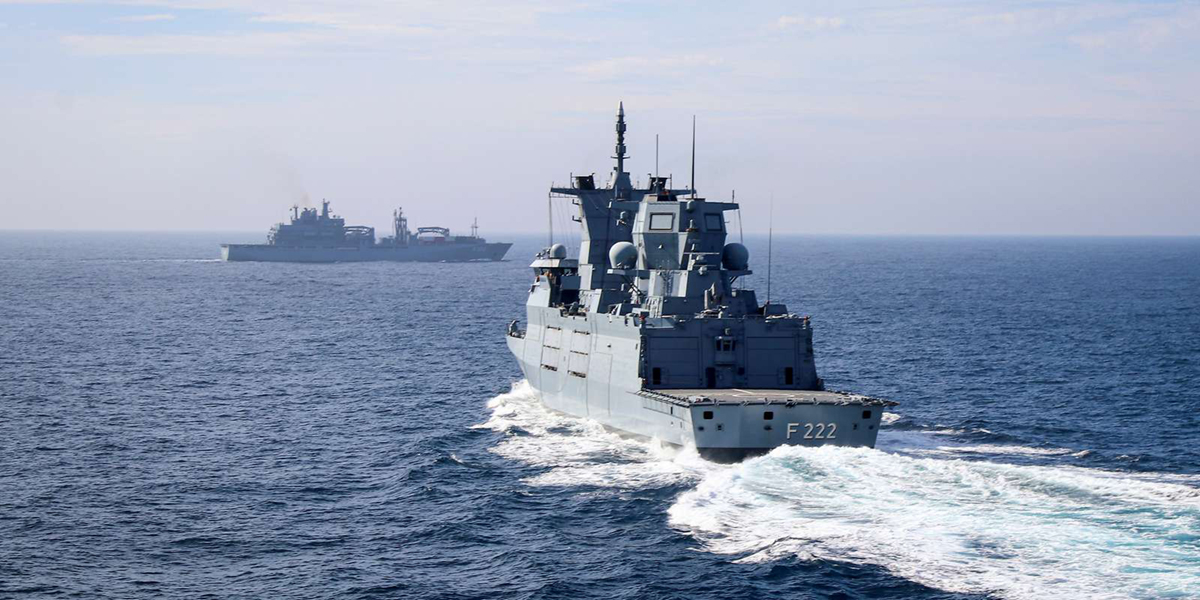
Overall, the Pacific-Asian region is experiencing a growing dynamic of maritime armaments in the naval forces. The countries there want to be prepared for a possible armed confrontation with China. During his trip to the Indo-Pacific in 2024, Defence Minister Boris Pistorius emphasised Germany's intention to contribute to greater stability and security in the region, because "security in this region is linked to security in our region, even if this has not yet been understood everywhere in Europe."
Dieter Stockfisch

